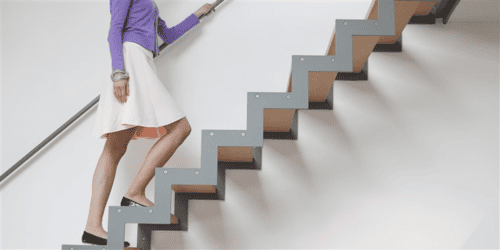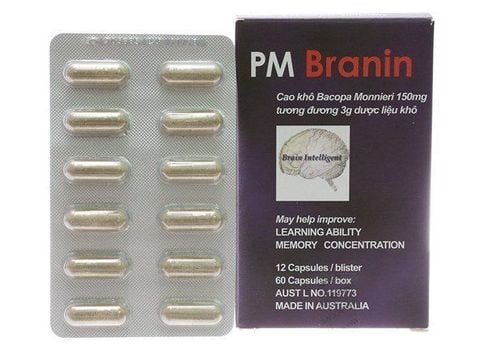This is an automatically translated article.
“Is it good to walk and climb stairs” is the question of many people. In fact, climbing stairs has many health benefits, including improved cardiopulmonary health, strengthening of major muscle groups. It is also used as a measure of fitness, if you cannot climb 4 flights of stairs within 1 minute, you should see a doctor to check your health.
1. Is climbing stairs good?
1.1. Improves Cardiopulmonary Function Stair climbing is considered an activity to improve heart and lung health. Healthy lungs allow the body to take in more oxygen. Meanwhile, a healthy heart will help pump blood to the organs more efficiently.
For better heart health, the American Heart Association recommends 150 minutes of moderate-intensity exercise a week, which equates to 30 minutes a day, 5 days/week of climbing stairs. Within a week or two, you should start to feel stronger and toned legs.
1.2. Stair climbing burns calories Using the StairMaster or climbing stairs directly is an effective way to lose weight or control weight. On average, a 30-minute workout can burn 180-260 calories or more, depending on your body weight and intensity of exercise. The heavier the person and the more intense the exercise, the higher the ability to burn energy. On the StairMaster stair climber, there is a calorie burn measurement tool to help you customize it to suit your training purposes.
1.3. Core strength Core muscles include muscle groups in the abdomen, hips, and lower back. Stair climbing requires the body to be in balance throughout the exercise, which helps to strengthen the core muscles, prevent lower back pain, reduce the risk of injury and improve posture. .
1.4. Stronger bones Stair climbing reduces the risk of osteoporosis and is used as a treatment for this condition. Bones are living tissue, and climbing stairs helps increase bone mass, which is especially important as you age, as the natural process of bone loss tends to increase with age.

“Đi bộ leo cầu thang có tốt không” là thắc mắc của nhiều người.
1.5. Improve quadriceps strength The quadriceps are a group of four muscles in the front of the thigh that work continuously during stair climbing. Therefore, every time you step up the stairs, you are strengthening this important muscle mass.
1.6. Improve hamstring strength The hamstrings are the 3 muscles on the back of the thigh that flex the knee, so they play a very important role in climbing stairs. The hamstrings play a key role in creating each knee flexion movement up the stairs.
1.7. Stronger calves While climbing stairs, calves also play an important role in allowing you to lift your heels to take the next step. In addition, it is also essential to maintain balance when standing.
1.8. The glutes are stronger than the glutes, located in the buttocks area, is one of the strongest muscles in the body. The main function of the glutes is to move the hips and thighs, so it is an integral part of the movement that comes with climbing stairs.
1.9. Knee pain relief: Strengthening the knee through climbing stairs can help reduce pressure on joints, reducing pain in the case of osteoarthritis.
1.10. Create positive energy The body will release endorphins when climbing stairs, this chemical has the effect of improving mood and reducing stress. It is also the reason why you feel satisfied after completing a workout even though you are a bit exhausted.
2. What does climbing stairs say about health status? Can climbing stairs indicate current health status? A new study presented at the European Society of Cardiology shows that brisk exercise can predict the risk of premature death from cardiovascular disease, cancer and a number of other diseases. To take the test, you only need to take the time to climb four flights of stairs, which healthy people usually complete in less than 1 minute.
Research also shows the importance of exercise in improving cardiovascular diseases and cancer. Stair climbing can be used as an assessment of the success of a heart surgery, as climbing stairs is an indication that the surgery will go relatively smoothly. Exercise is also used as a supportive therapy in long-term cancer treatment for patients.
If you fail the stair climbing test, you should use it as an excuse to see a doctor. During the examination, you should talk in detail about the health problems you are experiencing to help the doctor make an appropriate diagnosis and treatment. You should also consider the failure of the test as an incentive to improve your physical condition in the future.

Nếu thất bại trong bài kiểm tra leo cầu thang thì bạn nên sử dụng nó để như một lý do để đi khám.
3. Is it okay to climb stairs to breathe? Stair climbing is something to avoid, but some studies argue quite the opposite. Many doctors advise patients that they should try to exercise for 30 minutes a day at an intensity that causes shortness of breath to improve their health. In order for the training process to be effective, you should also consider a good diet, reduce stress, and get enough sleep.
30 minutes of high-intensity interval training is often difficult for beginners, instead, you should work out at a low intensity, then gradually increase the intensity over time. The goal is to stay breathless for as long as possible, 5 - 10 minutes or more; Breathing breaks are necessary, but as short as possible. People with limited health should not practice in this form, instead should choose a more suitable type of exercise such as swimming, or using an elliptical machine.
4. Does climbing stairs help with weight loss? If you're overweight, losing weight can help lower your blood pressure, cholesterol and blood sugar levels, and ease the strain on your joints. Actual climbing stairs or using a machine can both help with weight loss, the weight loss effect will be more obvious when combined with other forms of exercise such as stretching exercises, upper body weight training.
Along with the training process, you should also adhere to your diet, a balanced diet with fruits, vegetables, whole grains and lean protein, and reduce your consumption of sugar and fat. saturation will help lose weight faster and more effectively.
Please dial HOTLINE for more information or register for an appointment HERE. Download MyVinmec app to make appointments faster and to manage your bookings easily.
Reference source: healthline.com












